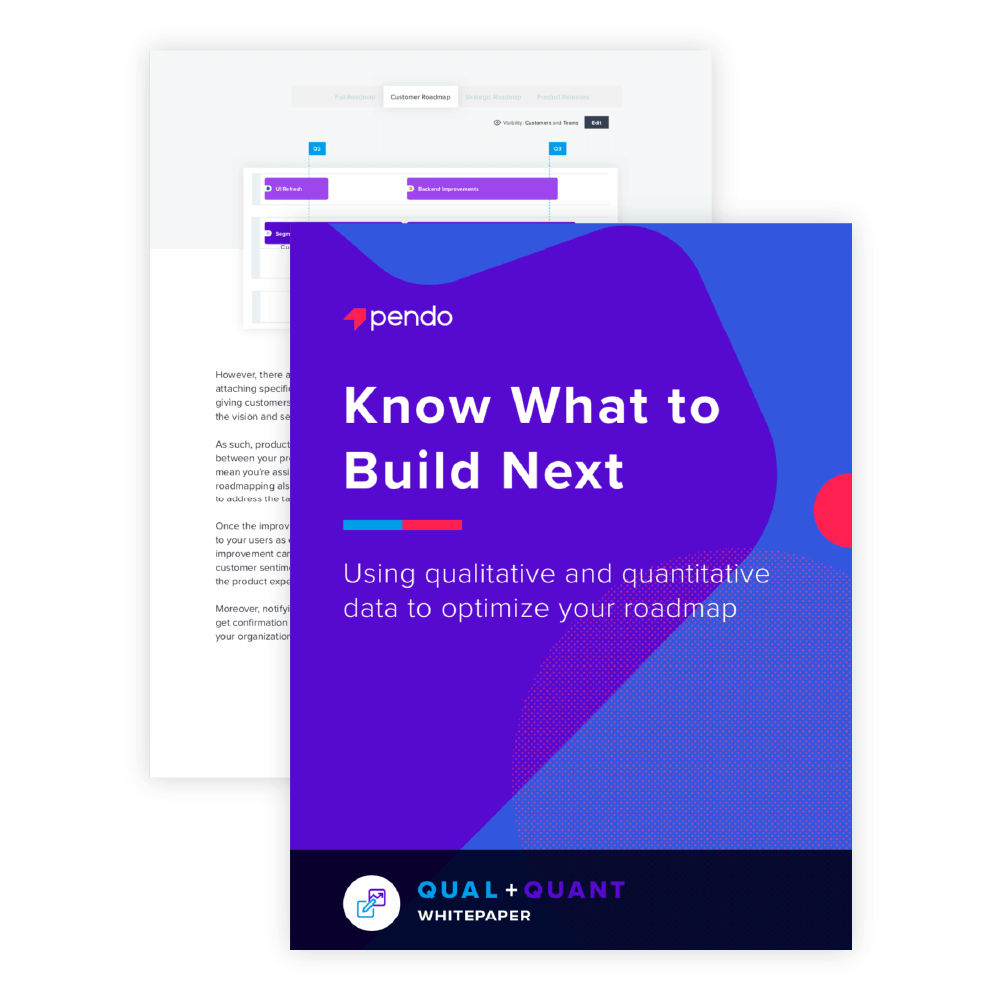
Table des matières
In a rush?
Download the PDF for later
Using qualitative and quantitative data to optimize your roadmap
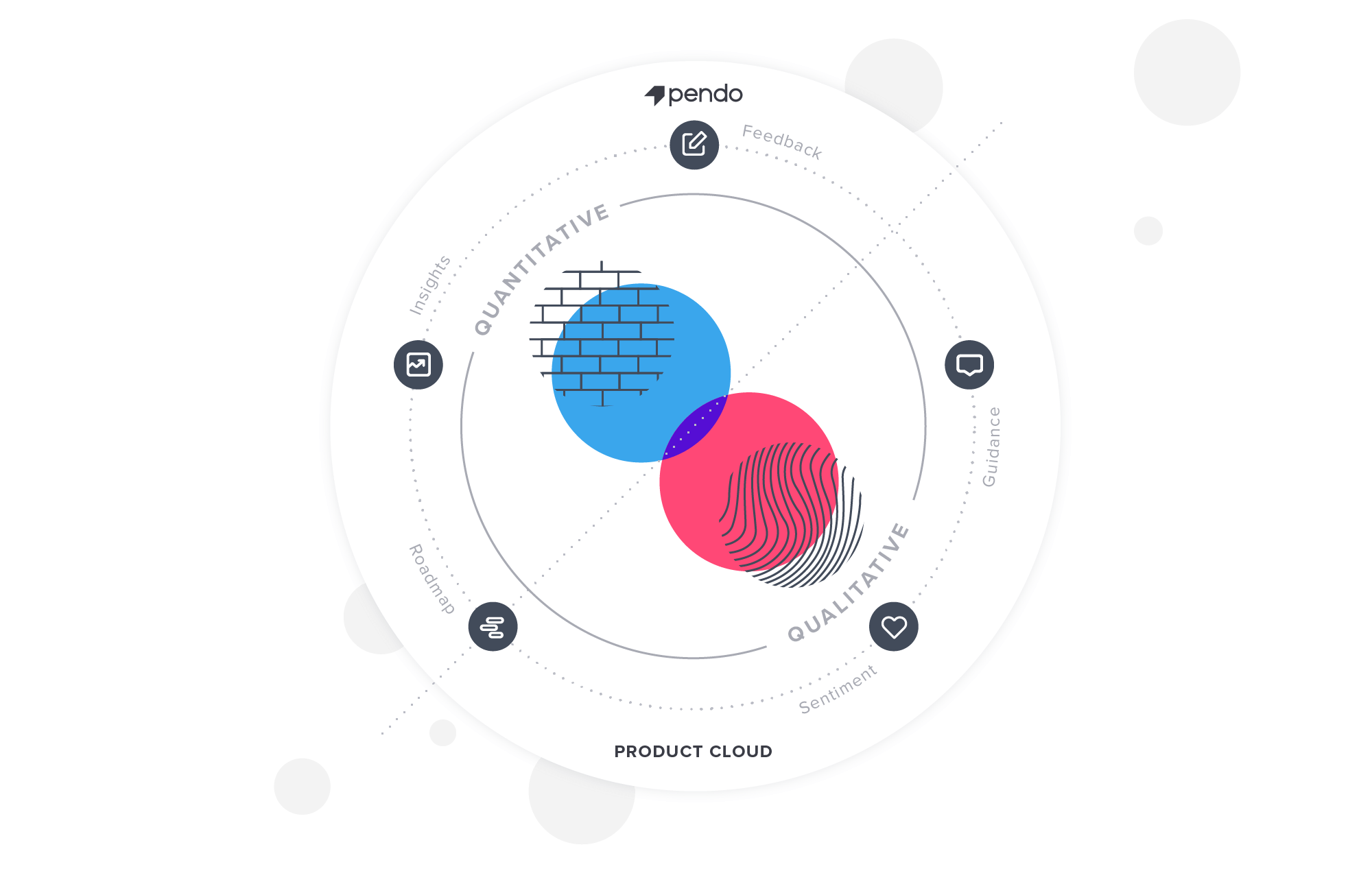
Every day, prospects, market events, internal stakeholders, and customers give product teams information on how their product is used and perceived. As switching solutions becomes less expensive, customers expect every product to remain intuitive and effective as their needs evolve, and they’re increasingly voicing these requirements across the product journey. While receiving product feedback and feature suggestions from a variety of sources is both necessary and essential to innovation, it can also quickly become overwhelming.
To make sure product teams are addressing the needs of the market in ways that push the company ahead of competitors, three key questions should always stay top-of-mind:
1. How do I know what to build next?
2. Are my teams working on the right things?
3. Are we communicating updates in ways that foster great customer experiences?
But how do you make sure you’re accurately answering those questions and the process of answering those questions doesn’t impede action and innovation?
The solution is a combination of qualitative and quantitative product and user data, correlated and accessible in one location. Unsiloing and blending all of this diverse data is essential to evaluating priorities and deciding what to build next, resulting in more value captured by the user and higher ROI from your product investments.
How do I know what to build next?
Which product improvements and new features are going to add value for my users?
Please fill out the form below to read the rest of this white paper
The most obvious, but crucial, first step of knowing what to build next is asking your customers what would improve their product experience. This solicitation can take a variety of forms: openended feedback forms in your application, multiple choice polls about the usefulness of specific product features, NPS ratings, customer success teams raising the question on a check-in call, beta testing and interviews, etc.
But your customers are not the exclusive source of product feedback. Some of the most valuable suggestions for improvement can also appear during initial sales calls with prospects, internal evaluation of new features in your organization, and during design research and quality assurance motions.
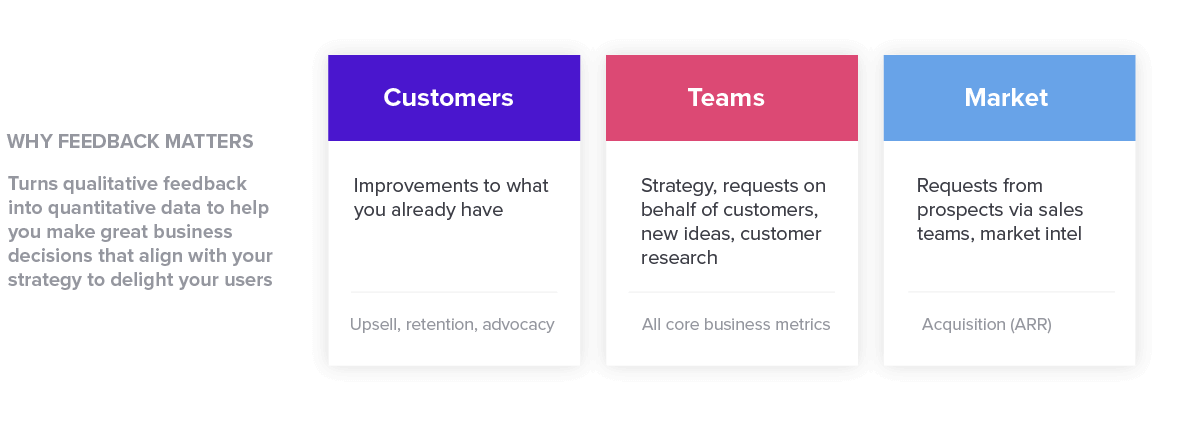
The most critical component to finding value and fully utilizing all of this product feedback data is processing and organizing it intelligently, using a workflow that will scale with your company growth.
Why? Because when product feedback is gathered and stored in disparate locations like spreadsheets and CRMs, synthesizing that mountain of unstructured information is inefficient at best and inaccurate at worst.
This is why a system to collect and convert direct feedback into product demand intelligence is a core capability for product and user experience teams. For product-led companies, a tight roadmap and the customer’s success rely on a scalable way to collect insights directly in the UI while maintaining a single source of truth for all data related to product enhancements.
Beyond capturing feature requests, product demand intelligence helps companies set priorities by enhancing user feedback with behavioral data to both qualify and evaluate the potential return on product suggestions.
High value > high volume
We know that in order to stay ahead in today’s competitive landscape, innovation must be a core component of your product strategy. This gets complicated, however, when the quantity of product updates or features shipped is mistaken for innovation.
Today, 80 percent of features in the average software product are rarely or never used. Publiclytraded cloud software companies collectively invested up to $29.5 billion developing these neglected features. 1
Why? Too often, majority wins. If your customers are using simple upvoting to say “I want this, too,” and the value attached to the feature request stops there, you may get the sense that the sheer number of upvotes indicates what you should work on next.
While, at face value, it may seem like these are the improvements that will have the largest impact, this may not be the case. Often, “nice to have” requests (e.g., minor customization of color schemes in an application) get the most agreement because they’re easy to imagine and hard to disagree with. Other times, customers may both upvote the same feature, but with vastly different implementations of your product or urgency attached to the specific feature request. 2
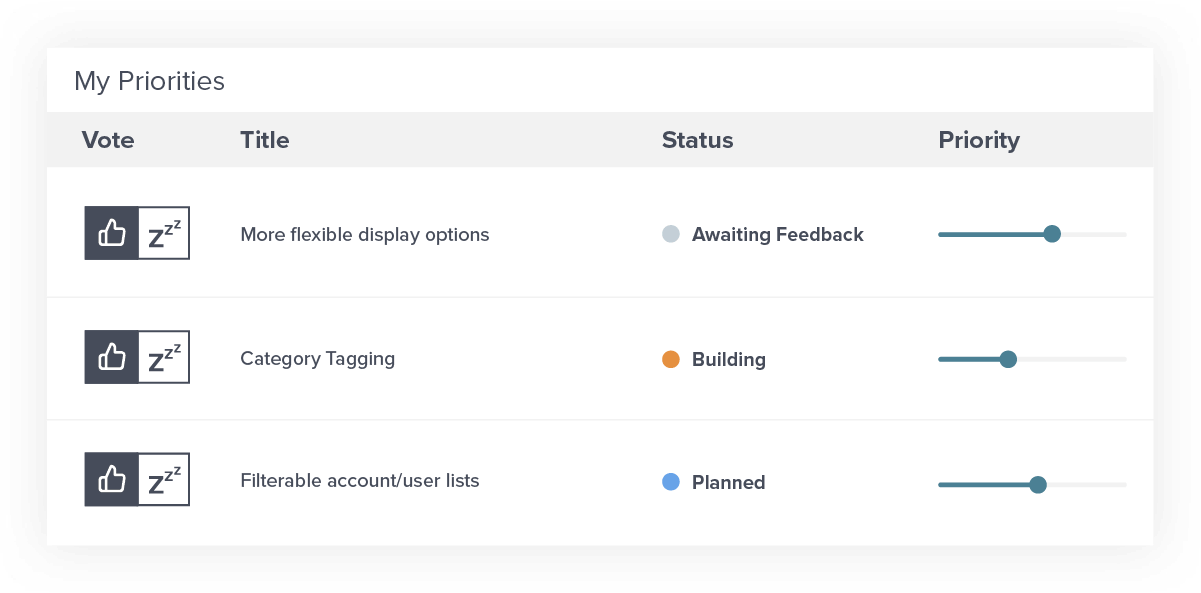
To better identify the “need to have” requests, give those submitting the feedback the power to prioritize their requests in relation to each other.
A zero-sum sliding scale that works across all requests, for example, requires customers to prioritize every piece of feedback they provide. By forcing submitters to effectively rank their own requests, rather than placing the highest value on every request, it gets product teams closer to uncovering which improvements and which areas of the product experience would be most valuable, according to the end user.
1 The 2019 Feature Adoption Report
2 An important caveat to this is when there are many hands raised for a feature that is
essential to using your product at the most basic level. These most likely aren’t features
that need to be built, but bugs that need to be fixed!
Are my teams working on the right things?
Which product improvements will add value to the way customers use the product and help grow my business, in alignment with our strategy?
Capturing and organizing product feedback from your existing customers tells a large part of the story. But pairing it with usage data is critical to identifying areas of friction and understanding how to better optimize the product experience.
Ideally, usage data from across the entire product journey is collected, organized, and enriched with qualitative feedback data. Analyzing specific user segments based on their myriad behaviors like clicks, page views, and interactions with guides provides a framework for customer inputs to be understood more deeply as product demand intelligence.
As a result, you can continuously spot trends across product usage and user sentiment, pinpoint specific opportunities to make improvements, and iterate on functionality.
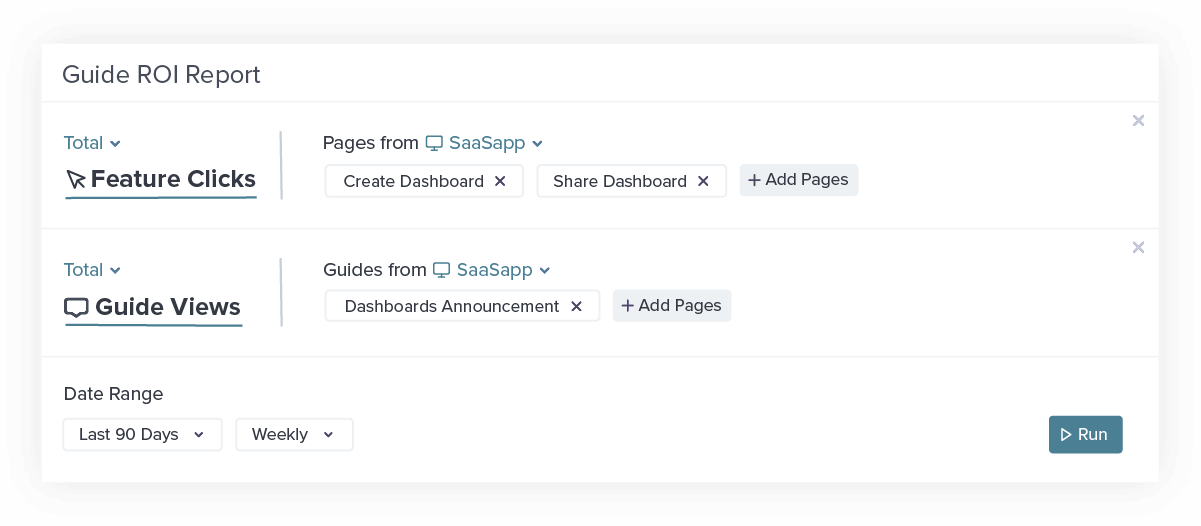
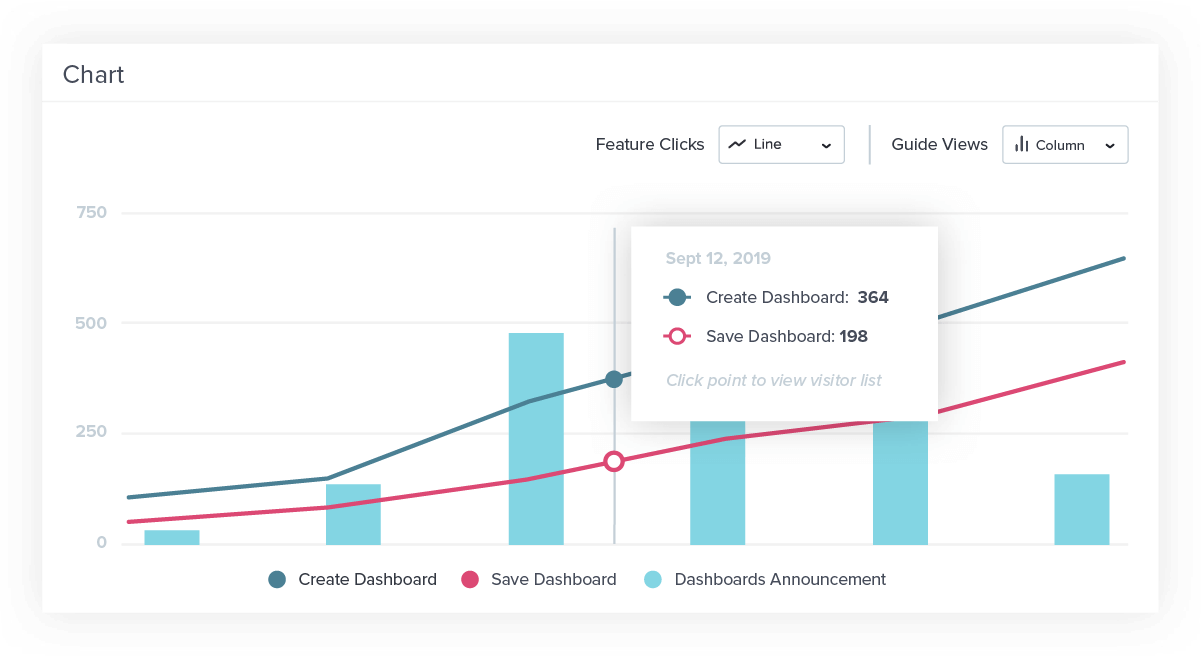
As you continue to develop your product, specific aspects of user sentiment and feedback should help drive you toward areas in need of improvement. When you understand how people are using your product and can pair that with how they feel about using your product, you get closer to the truth of what to build, how to build, and when to build the next great capability that delights your users and drives growth for your business.
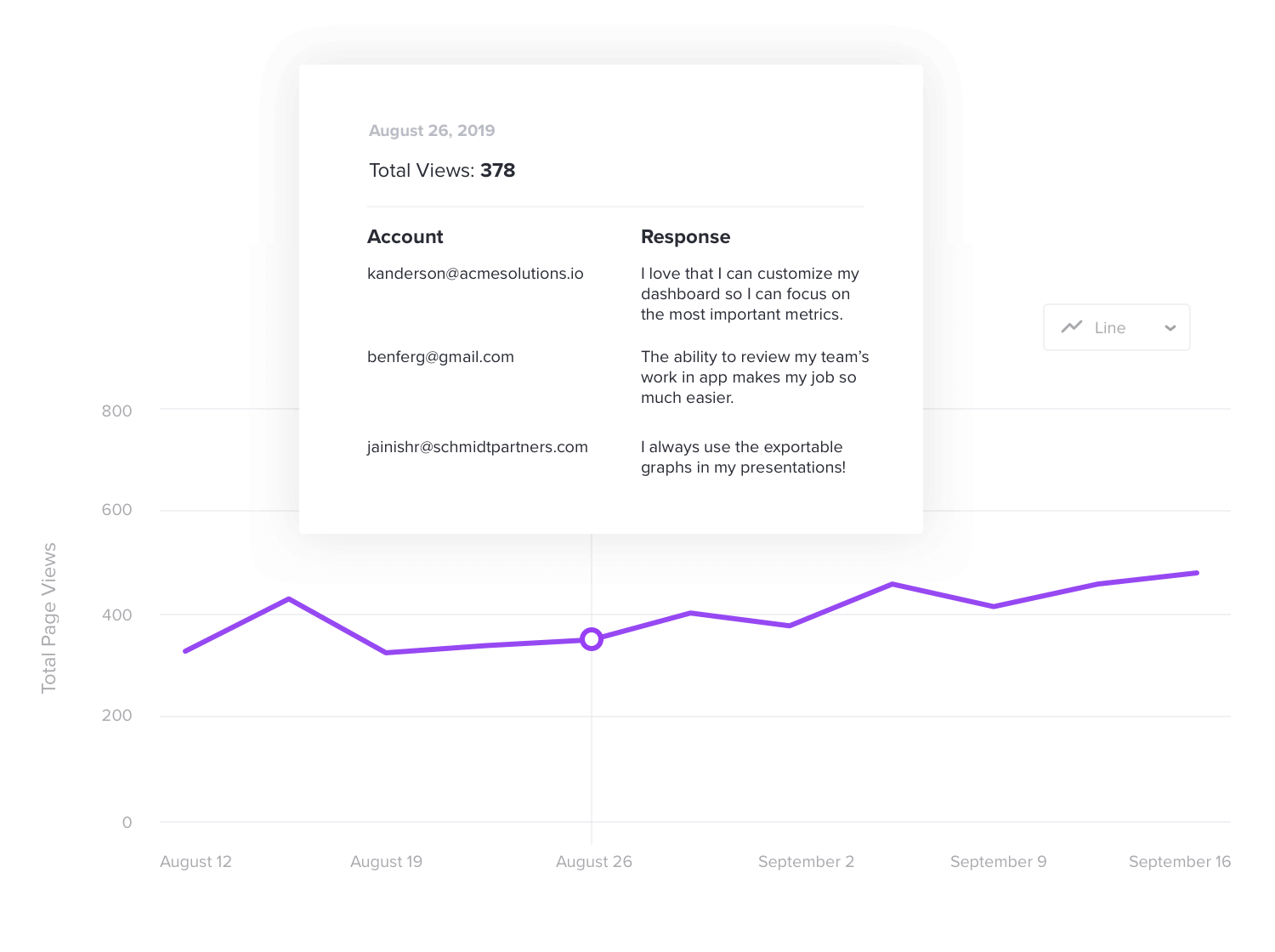
Determining which improvements will positively impact your users and contribute to growth in the ways that matter to your business starts with narrowing in on your product feedback based on user characteristics, account type, or any theme you determine is important to your decision process. Instead of viewing all feedback in aggregate or treating all feature requests as equally valuable, there are a number of ways to slice and dice product feedback for a better way to align priorities with company strategy.
If improving the retention of specific verticals is a goal for your organization, then the product roadmap has to reflect it. In this case, understanding the business implications of customer feedback starts with knowing the highest priority product improvements for at-risk customers by vertical. If the objective is increasing the renewal contract value for a certain tier of account, then you need a mixed qual and quant view of the data including current product usage and requests in that tier, organized by value, popularity, and anticipated effort by your internal team to fulfill each request.
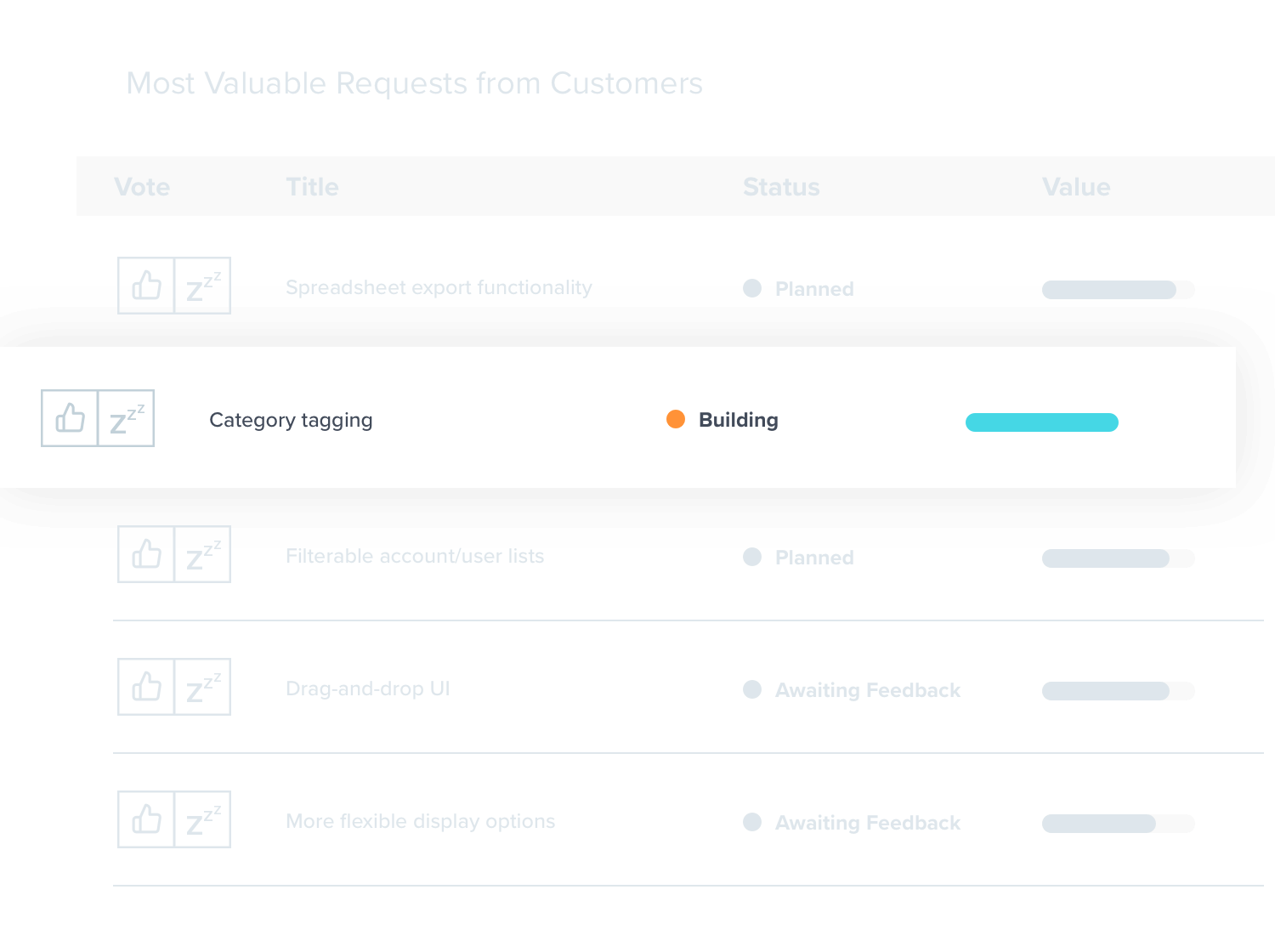
By segmenting and analyzing product usage, user sentiment, and feedback in a single motion, you’ll drive the right product improvements that are perfectly aligned with company growth goals and strategy
Are we communicating updates in ways that foster great customer experiences?
How are we using feedback in our product planning, and are we effectively communicating changes to our users?
For many companies, there is little room to waste time, money, or resources working on things that don’t move the needle or directly impact your bottom line. In increasingly competitive markets, product capabilities across solutions may appear almost identical. As such, the last remaining differentiator to help expand market share is the customer experience throughout the product journey.
The line doesn’t end with pinpointing what to build next and in what order. You still need to deliver on customer experience, close the feedback loop, and communicate to your users what you’re working on (or not) and why.
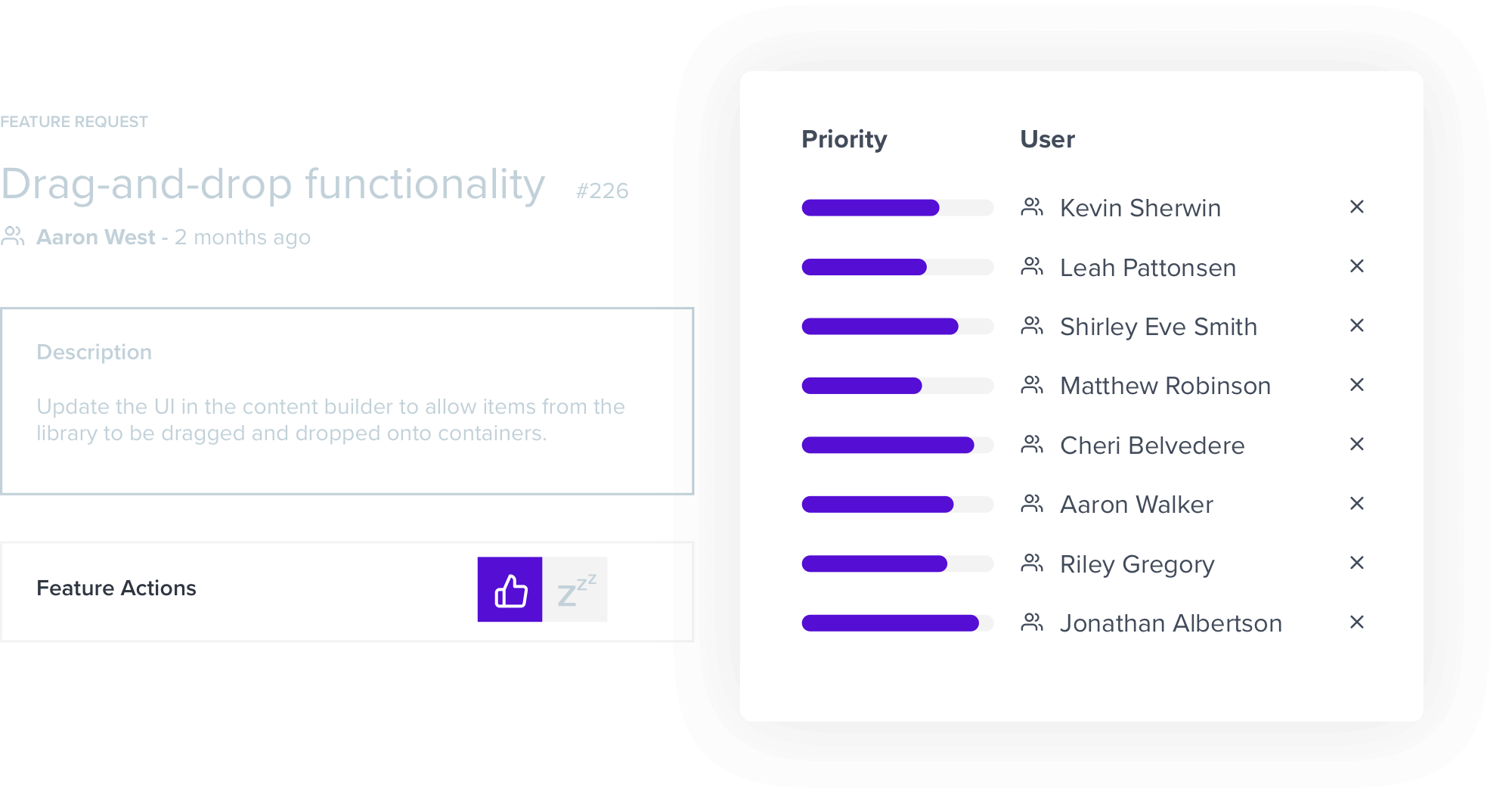
Roadmaps are for customers, too
One way to deliver on customer experience is through a visible and custom roadmap that allows users to keep tabs on the direction of the product.
This not only shows customers that their voice is heard, but it can help mitigate concerns about product deficiencies. Better yet, a sophisticated understanding of the customer base calls for the ability to create multiple fully managed roadmaps, tailored to specific accounts and roles. For example, sales teams can show a prospect-facing roadmap, which is less specific than a customer version for competitive reasons, but can still help sales overcome “lack of feature X” objections in initial conversations.
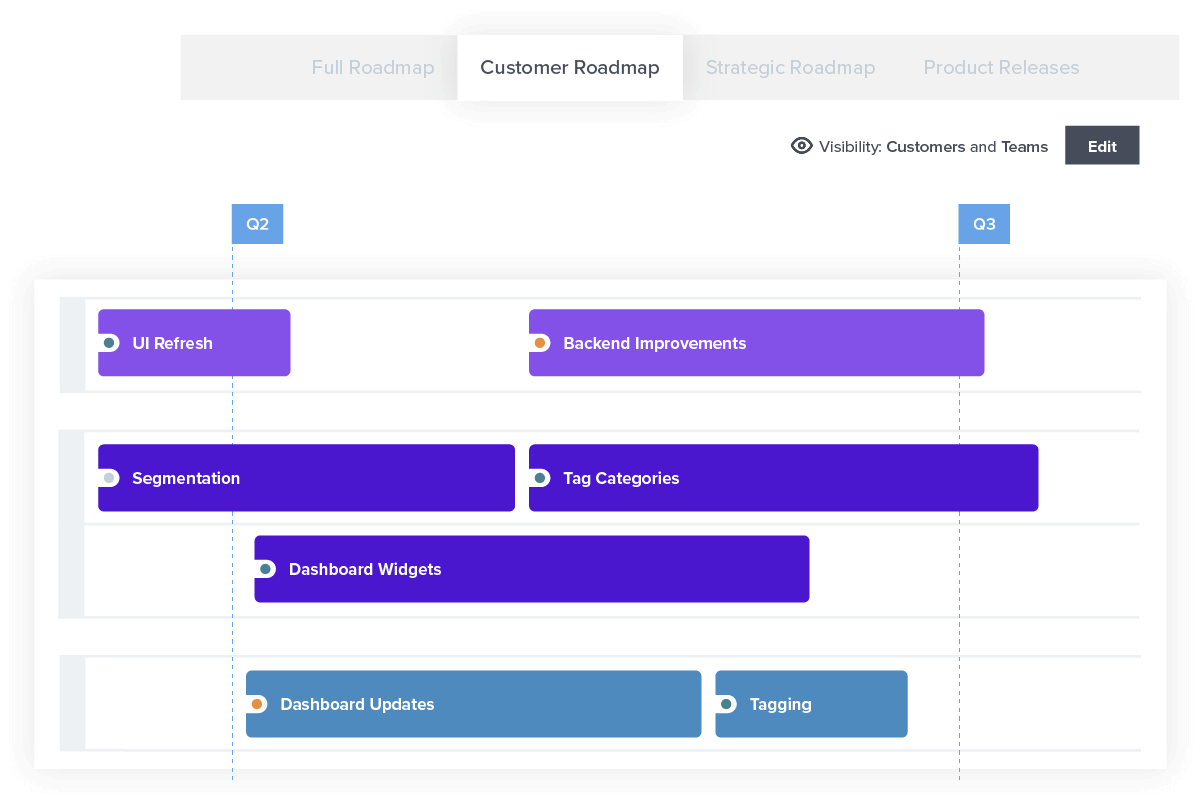
This not only shows customers that their voice is heard, but it can help mitigate concerns about product deficiencies. Better yet, a sophisticated understanding of the customer base calls for the ability to create multiple fully managed roadmaps, tailored to specific accounts and roles. For example, sales teams can show a prospect-facing roadmap, which is less specific than a customer version for competitive reasons, but can still help sales overcome “lack of feature X” objections in initial conversations.
However, there are certainly items you want to avoid in a customer-facing roadmap, like attaching specific dates to upcoming releases. The purpose of a product roadmap is less about giving customers a date in their calendar to check on the release status and more about sharing the vision and segment-relevant priorities of your business in a self-serve format.
As such, product prioritization should feel less like a negotiation and more like a collaboration between your product team and your customers. It’s important to note that prioritization does not mean you’re assigning little or no value to the items you don’t build first. Prioritization through roadmapping also shouldn’t feel like a process carried out by a board of internal actors who fail to address the tangible pains of your external users.
Once the improvement is pushed to production, it’s important to communicate these changes to your users as early as possible. In particular, notifying those who placed high value on the improvement can help its discoverability, prove the investment was valuable through better customer sentiment, and act as a touchpoint for continuing to get user feedback on how to make the product experience better.
Moreover, notifying users when a change they suggested goes live is mutually beneficial. They get confirmation that their voice is heard while improving product engagement and supplying your organization with the necessary information for improvement and growth.
Qual + Quant = Product Love
Determining how to deliver the best possible product experience is no easy feat. While keeping the essential three questions in mind—How do I know what to build next? Are my teams working on the right things? Are customers getting the experience they deserve?—is a start, answering them involves a comprehensive set of data that is both qualitative and quantitative.
Finding the right answers requires collection, processing, and analysis of product usage and feedback data in alignment with your larger company strategy and business objectives. Without this unique pairing of qual and quant data, you run the risk of wasting resources and losing customers.
Déterminer les fonctionnalités à développer en priorité grâce à Pendo Feedback
Pendo Feedback pairs qualitative and quantitative data for a view of what your users want and need for a more valuable product experience. As part of the Product Cloud, Pendo Feedback empowers you to:
Know what to build next
Analyze and understand product requests more efficiently with Pendo Feedback, by creating a single location for
collecting, organizing, and prioritizing product feedback from all internal and external sources.
Ensure that your teams are working on the right improvements
Paired with user insights, Pendo Feedback helps align the most valuable demands of user cohorts to your company’s growth and revenue strategy
Communicate updates in ways that foster great customer experiences
Provide customers with a view into what you’re building next, notify users at the right time about features built for them, and turn customers into product advocates by including their voice in your product roadmap—all within Pendo Feedback.